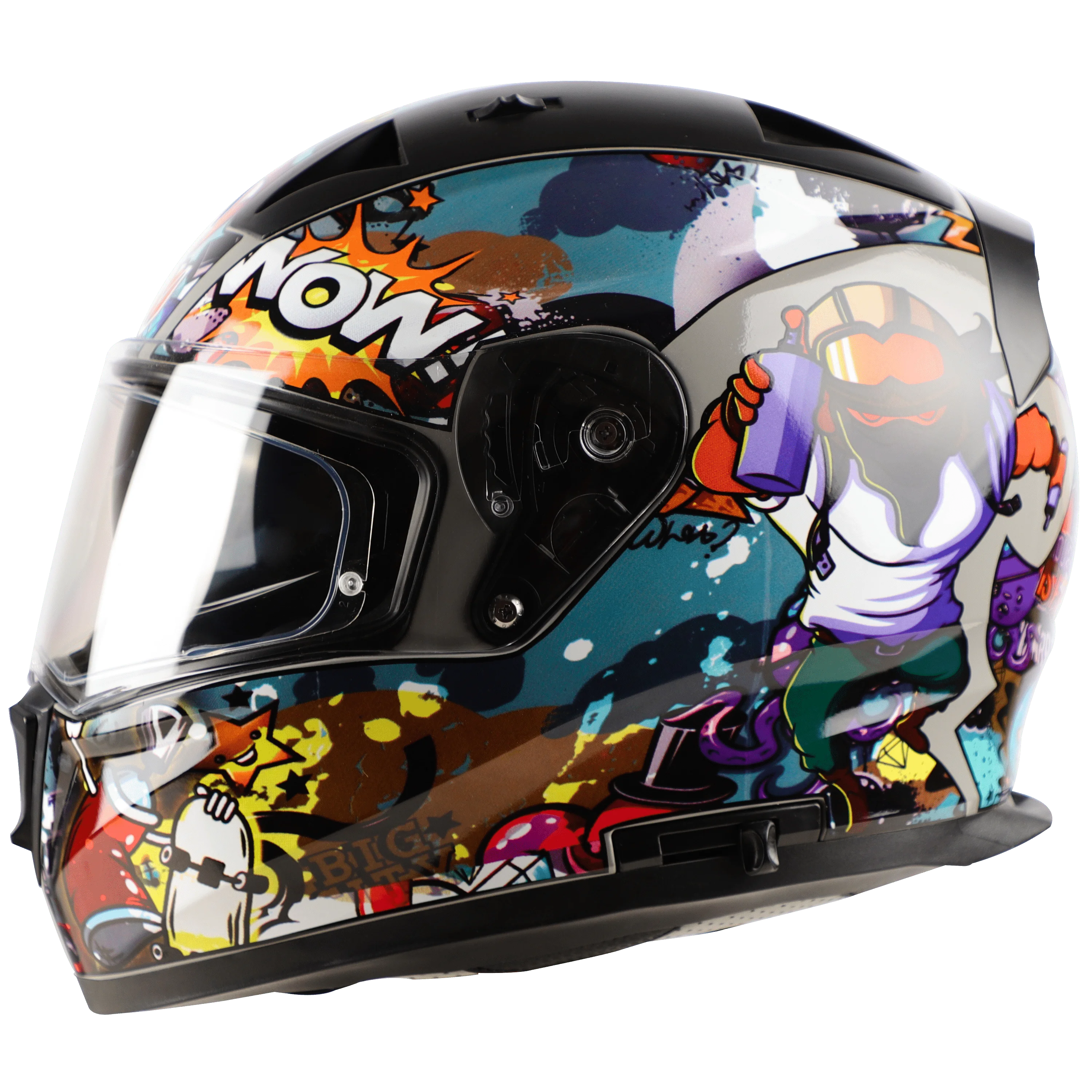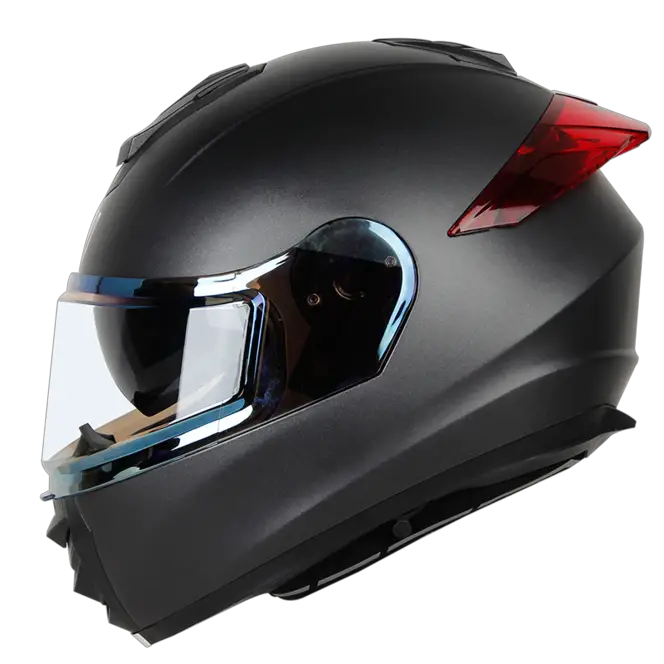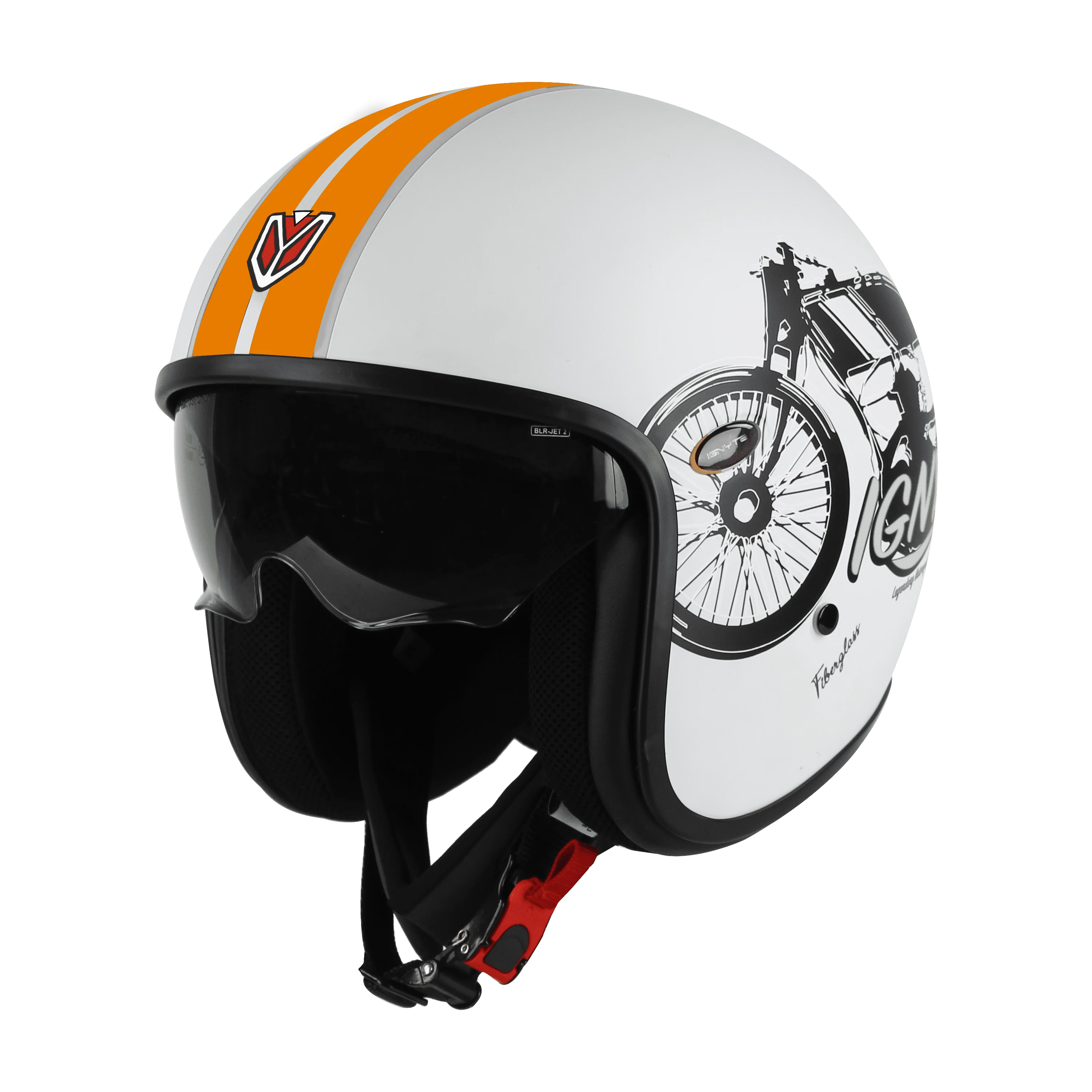
Frequently Asked Questions
Q1. How Do I Select the Right Helmet?
Choosing the perfect helmet size is crucial for comfort and safety. Follow these steps to ensure a proper fit:
Measure your head: Use a measuring tape or string to measure around your head just above the eyebrows and ears (the area typically covered by the helmet). Note down this measurement.
Visit a store: Go to a dealer or brand outlet and request a helmet in your recorded size.
Try on the helmet: Secure it with the chin straps, ensuring the helmet makes contact with all areas of your head. There should be no gaps, and the pads should touch your cheeks.
Check movement: Move your head up, down, left, and right to confirm the helmet doesn’t move independently or slip over your cheeks.
Test the fit: Open the straps and pull the helmet off. If it requires a moderate effort to take off but is not too tight, you have the right fit.
Comfort check: Wear the helmet for about 10 seconds to ensure it feels comfortable and secure for extended use.
Always try on a helmet before purchasing to make sure it fits you perfectly.
Q2. How Should I Store My Helmet?
Proper storage extends the life of your helmet. Follow these guidelines to store it safely when not in use:
Use a bag or hook: Place your helmet in a padded bag or hang it on a helmet hook. If you don’t have a hook or dedicated space, you can also use the original carton.
Store in a safe environment: Ensure the helmet is stored in a shaded area, away from moisture or excessive heat.
Q3. How Do I Clean My Helmet?
Cleaning your helmet every 3–4 months helps prevent dirt buildup and bad odors. Here’s how to clean both the inside and outside:
Internal Cleaning (Optional):
- Check if the inner padding and lining are detachable. If they are not, proceed to external cleaning.
- If detachable, remove the padding and soak it in warm water for 20-30 minutes. Do not use detergent or chemicals to avoid strong odors.
- Gently wash the padding using a rolling wrist motion. Avoid excessive pressure.
- Dry the padding in a shaded area.
External Cleaning:
- Use a damp cotton cloth to gently wipe away grime. Avoid heavy scrubbing to prevent scratches.
- Allow the helmet to air-dry naturally. Avoid direct sunlight or using heat sources like blow dryers, as this could damage plastic components.
- Once dry, use a soft cotton or microfiber cloth to remove any remaining water stains.
Reassemble the helmet once all parts are dry. You can also polish the helmet with a small amount of wax, though this is optional.
Q4. What is EPS in a Helmet?
EPS, or Expanded Polystyrene, is a lightweight foam commonly known as Styrofoam or thermocol. It is used as the inner lining of helmets, beneath the outer shell (which is usually made of ABS, fiberglass, or carbon fiber) and covered with fabric padding. EPS is essential for absorbing impact, providing crucial protection in case of a crash or impact.
Q5. When Should I Replace My Helmet?
While helmets do not come with a set expiration date, it is recommended to replace your helmet every 3–5 years, depending on usage, maintenance, and wear and tear. Factors that indicate a replacement is needed include:
- If the helmet has experienced any impact, even if it appears undamaged, it should be replaced. Helmets are designed to withstand only one significant impact.
- Deep scratches or marks that do not disappear with cleaning.
- Damaged components like air vents, clips, or worn-out straps.
Q6. Should I Continue Using a Helmet After a Crash or If I Dropped It?
After any crash, regardless of the severity, it is highly advised to replace the helmet. Even if it looks undamaged, the structural integrity could be compromised. Frequent drops can also degrade the helmet’s safety over time. If a helmet hits the ground at any speed, it's best to replace it to ensure continued safety.

 Close Menu
Close Menu











